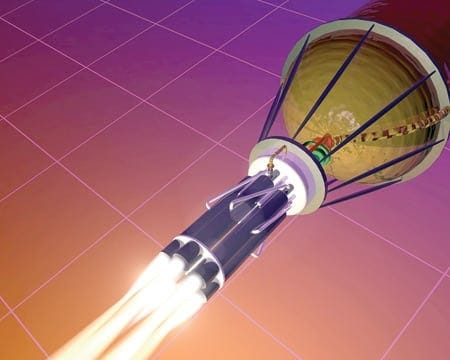Noah here. There’s a classic innovation model that goes back to Joseph Schumpeter, which basically says invention (the creation of a new idea) and innovation (finding a market for that invention) are fundamentally different actions. To Schumpeter, invention was pure discovery and had nothing to do with finding ways to actually sell the thing. They were different jobs performed by different people: inventors handled the making, and entrepreneurs handled the marketing. (Capitalists, the third corner of the triangle, dealt with the investment.) “Although entrepreneurs of course may be inventors just as they may be capitalists,” Schumpter wrote in his 1911 book The Theory of Economic Development, “they are inventors not by nature of their function but by coincidence and vice versa.”
This split model, where invention and innovation are fundamentally different functions, existed as the primary R&D model in industry for a long time. When we think back to many of the technology we rely on today, it was born out of research for the sake of research at places like Bell Labs, IBM, and GE. Years ago, I had the opportunity to visit GE’s Global Research Center in upstate New York and was struck by how they worked. Thousands of scientists were in their labs doing science and waiting for opportunities to show off their work to executives and customers who may find opportunities to commercialize the technology. A favorite story from one of these trips was learning that one of the first commercial uses for a pulse detonation engine was for cleaning boilers at power plants. I can’t help but include a bit of how it works:
The detonation wave travels at supersonic speeds within the combustion chamber and quickly decays to a blast wave once it leaves the chamber and propagates in open space (or within a large structure, such as a boiler). The blast wave—also known as a pressure wave, a pressure pulse, or simply an impulse—has the energy required to remove sintered and unsintered ash in the backpass of boilers. This pressure wave has little to no negative effects on tube erosion, and the required operational frequency is much less than that of acoustic horns.
Why is this interesting?
Things have changed a lot, and most companies have become much more focused on user-centered innovation. Instead of disconnecting the science and the market-making, you try to create new solutions to solve your potential customers’ needs. In other words, you start with the job to be done (in Clayton Christiensen’s words) and work your way backward. This approach is very much the ethos of the technology industry, amongst others.
To that end, I was fascinated to hear how mRNA allows pharmaceutical companies to work in this way for the first time. Here’s a quote from an excellent podcast interview with the CEO of Moderna:
In the pharmaceutical industry [before mRNA] you're basically scientists coming with a drug that binds to a receptor. And then they turn around to the commercial guys and say, "This is the drug. Good luck, make the best out of it." And that's what I think mRNA is going to flip on its head, the industry in terms of disruption. It’s that we're able to say, "Okay, what do you need to get the right drug working safely?" That's what we did for [Modern’s work with the Cytomegalovirus vaccine] CMV. We didn't come and say we need six mRNA? No, we said, what is the right biology to make a vaccine that's going to get approved, because it's going to work safely. That's how we started the CMV journey.
As he goes on to conclude, this offers a huge market advantage, as Moderna can build “backward from the solution, and not forward from the best molecule you can give me in the labs, and I need the best in the clinic and on the market.”
Some absolutely extraordinary things have come out of the split invention/innovation model—for example, information theory was a product of Claude Shannon who was working at Bell Labs at the time—but the approach has fallen out of favor as the bar keeps getting raised on what a breakthrough invention requires. While I don’t know enough to say that we should wholesale leave one approach for the other, it’s promising to hear that pharma, which has become famous for spending huge amounts to develop new drugs, has the opportunity to layer on a more modern approach. (NRB)
___
Partner Post: WITI x The Browser
With the flood of newsletters, there’s a lot of similar looking links floating around. Enter The Browser. It is a beautiful synthesis of articles you won’t find elsewhere, which opens your brain and your references. Like what we aim to do with WITI, the Browser team are obsessed with quality first and the finest rather than the latest. So there’s no peg to trending topics, but rather high signal, good links. We highly recommend subscribing. Sign up with 20 percent off with a special WITI code by clicking here and using WITI20 at checkout. (CJN)
___
Quick Links:
A great visual search engine (CJN)
New Yorker piece on the next wave of cyberattacks (CJN)
Rollerblading cops in Pakistan (CJN)
Thanks for reading,
Noah (NRB) & Colin (CJN)
—
Why is this interesting? is a daily email from Noah Brier & Colin Nagy (and friends!) about interesting things. If you’ve enjoyed this edition, please consider forwarding it to a friend. If you’re reading it for the first time, consider subscribing (it’s free!).




